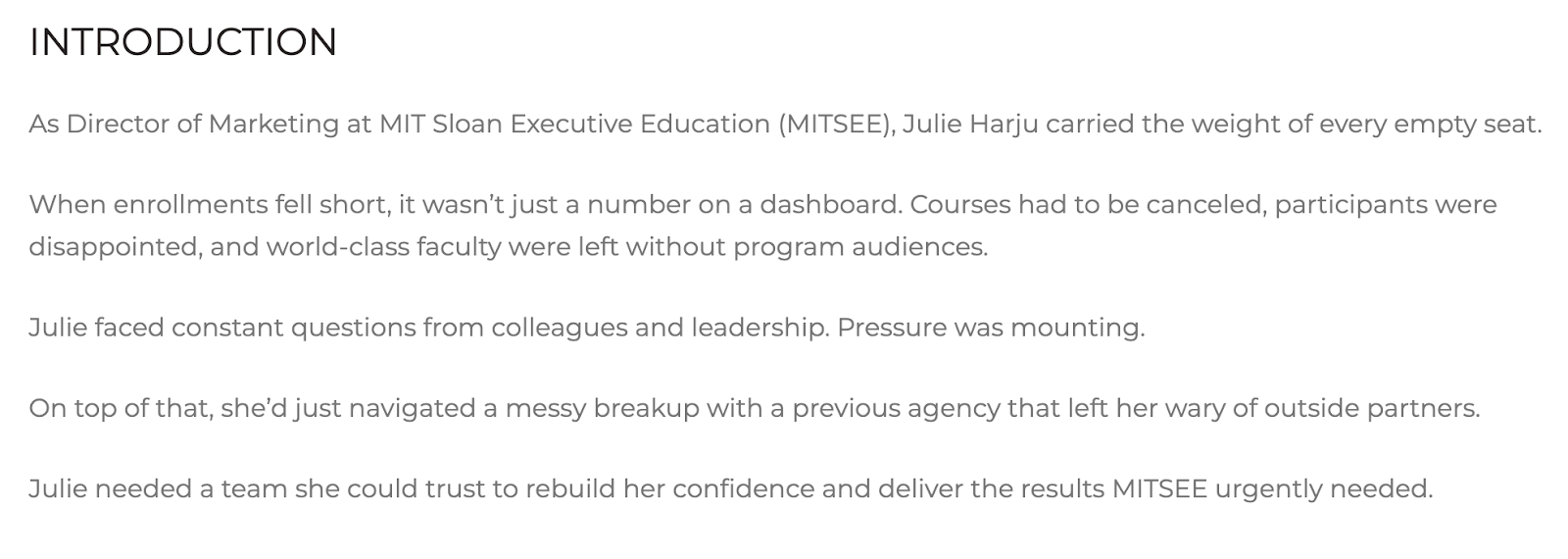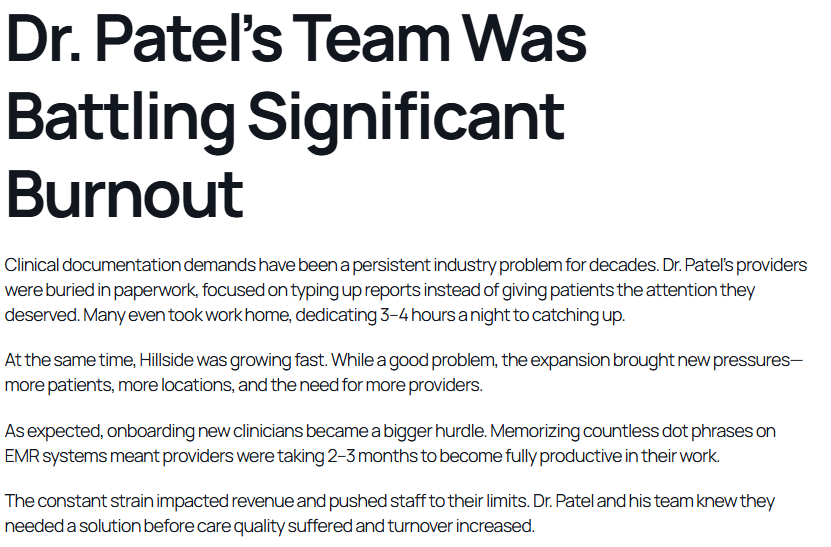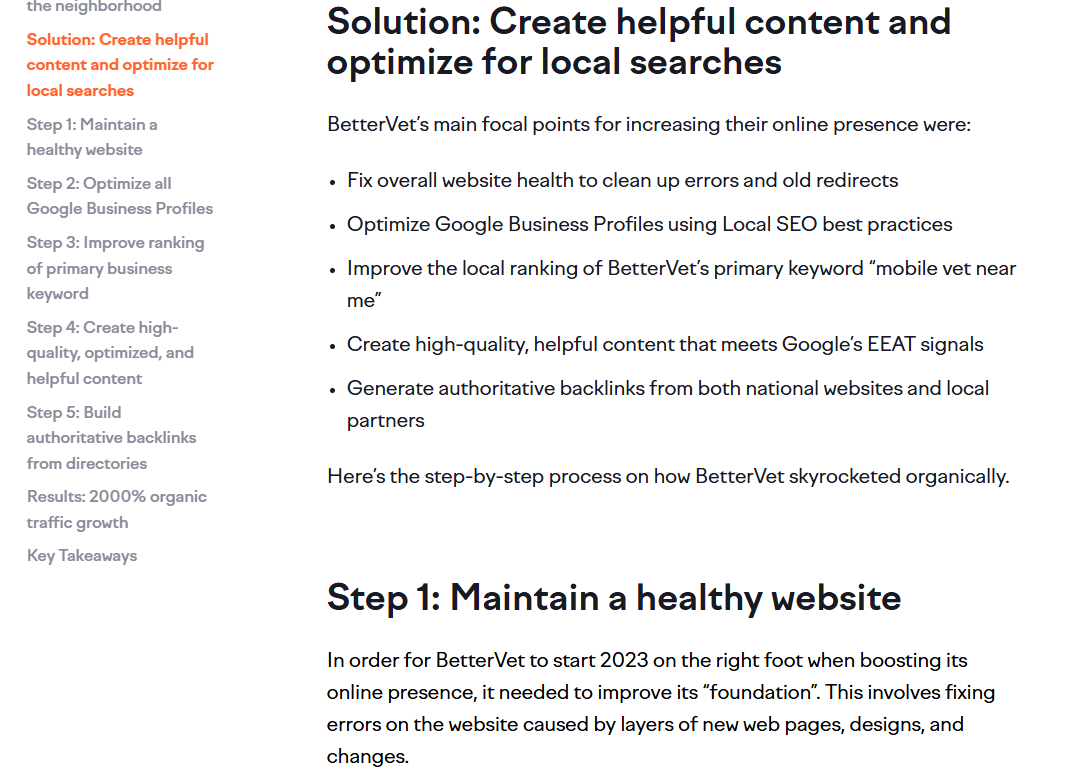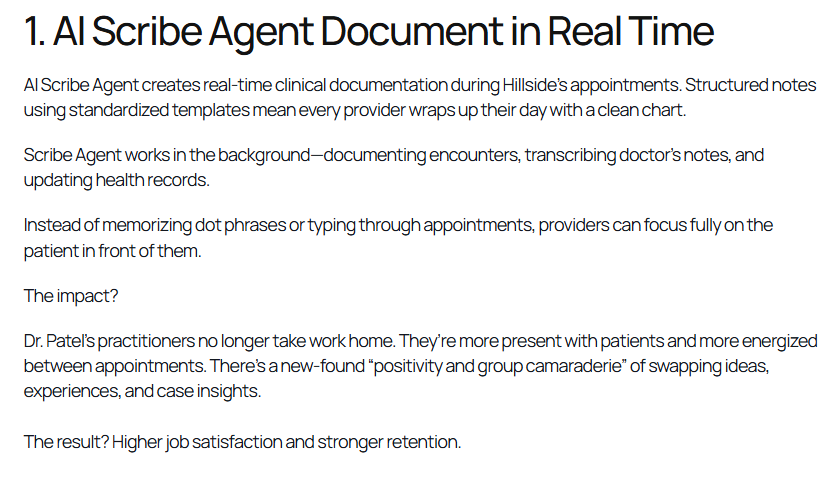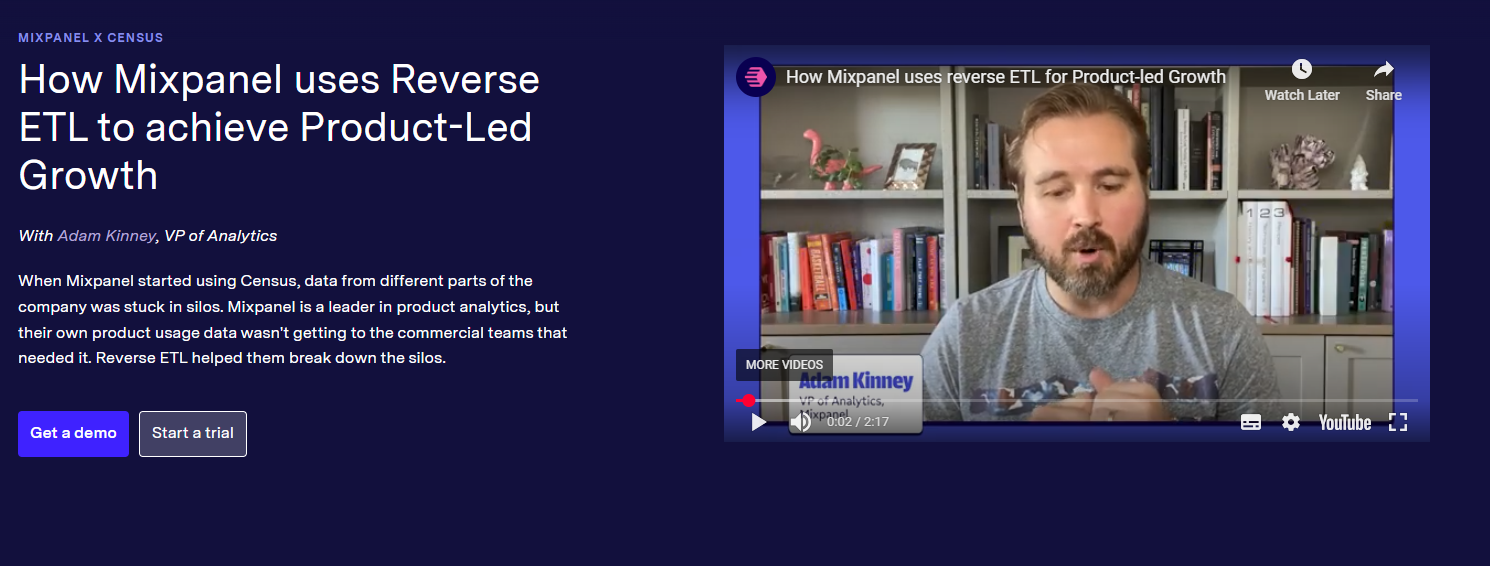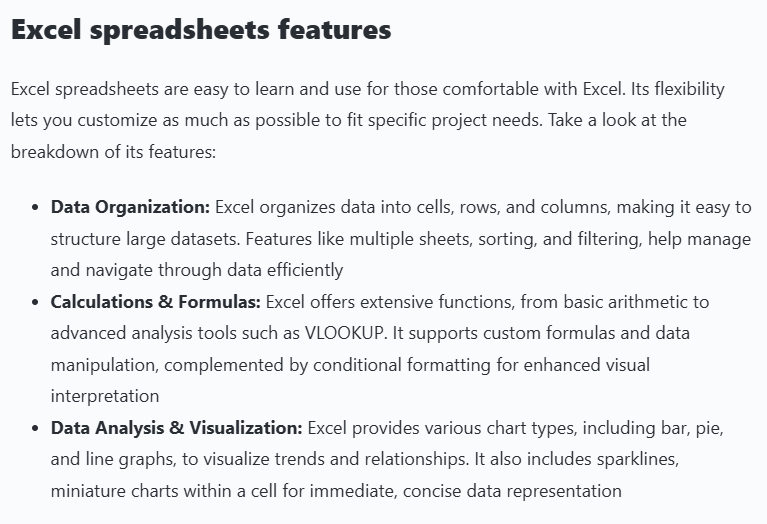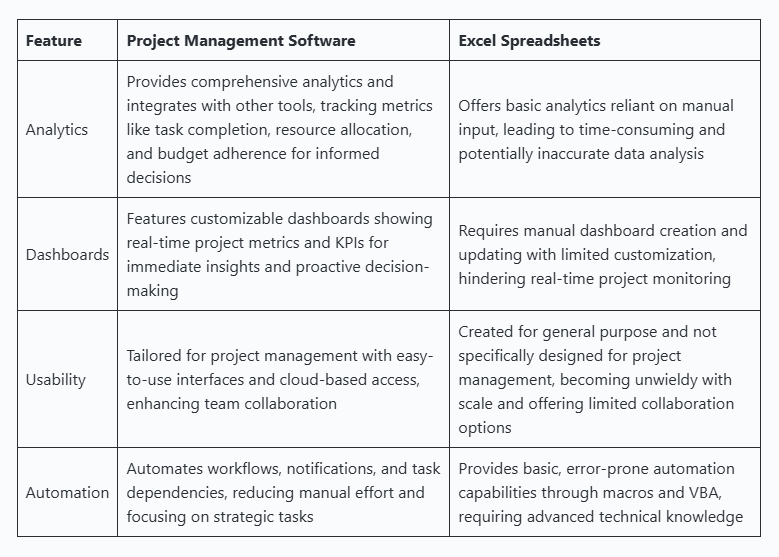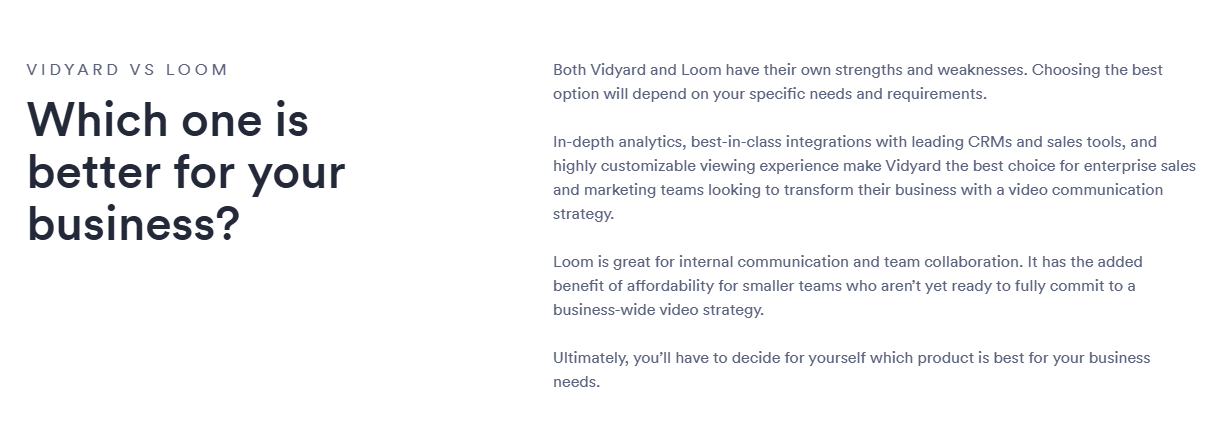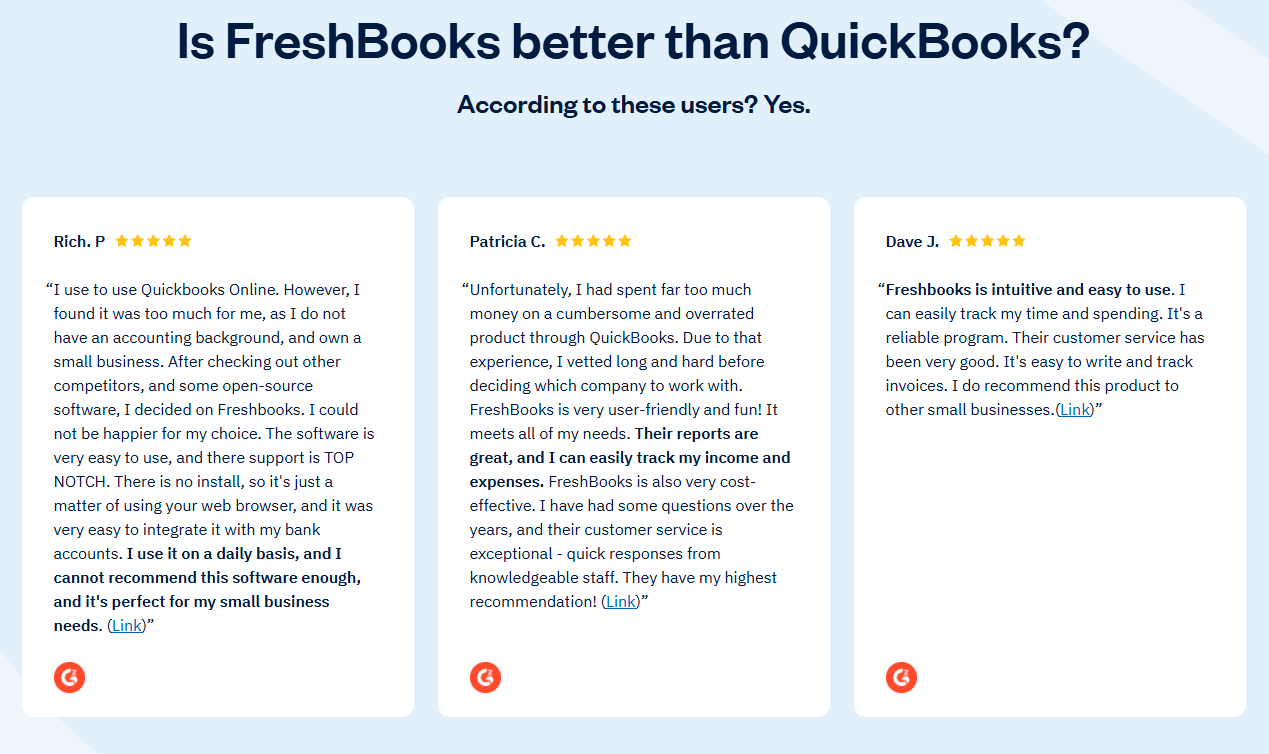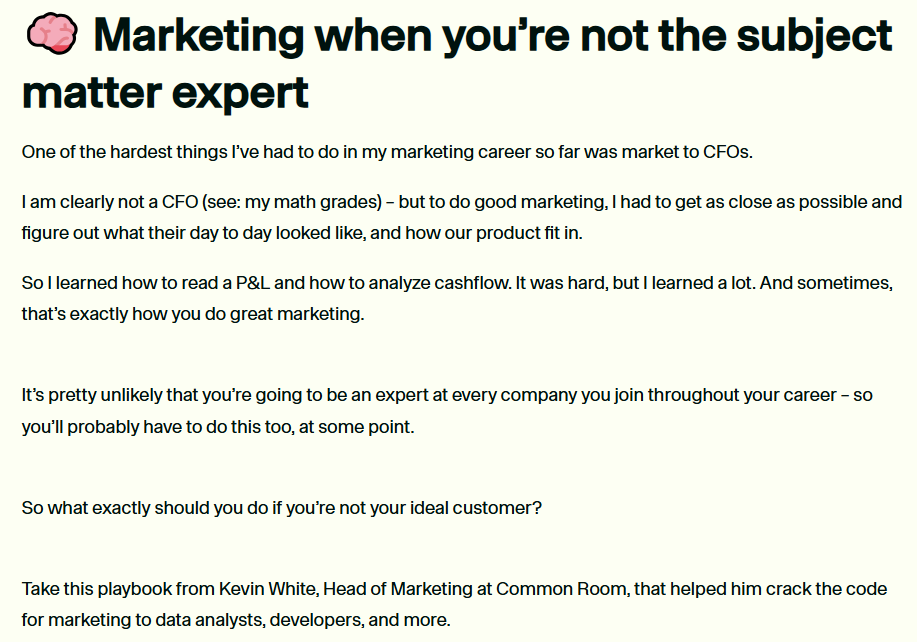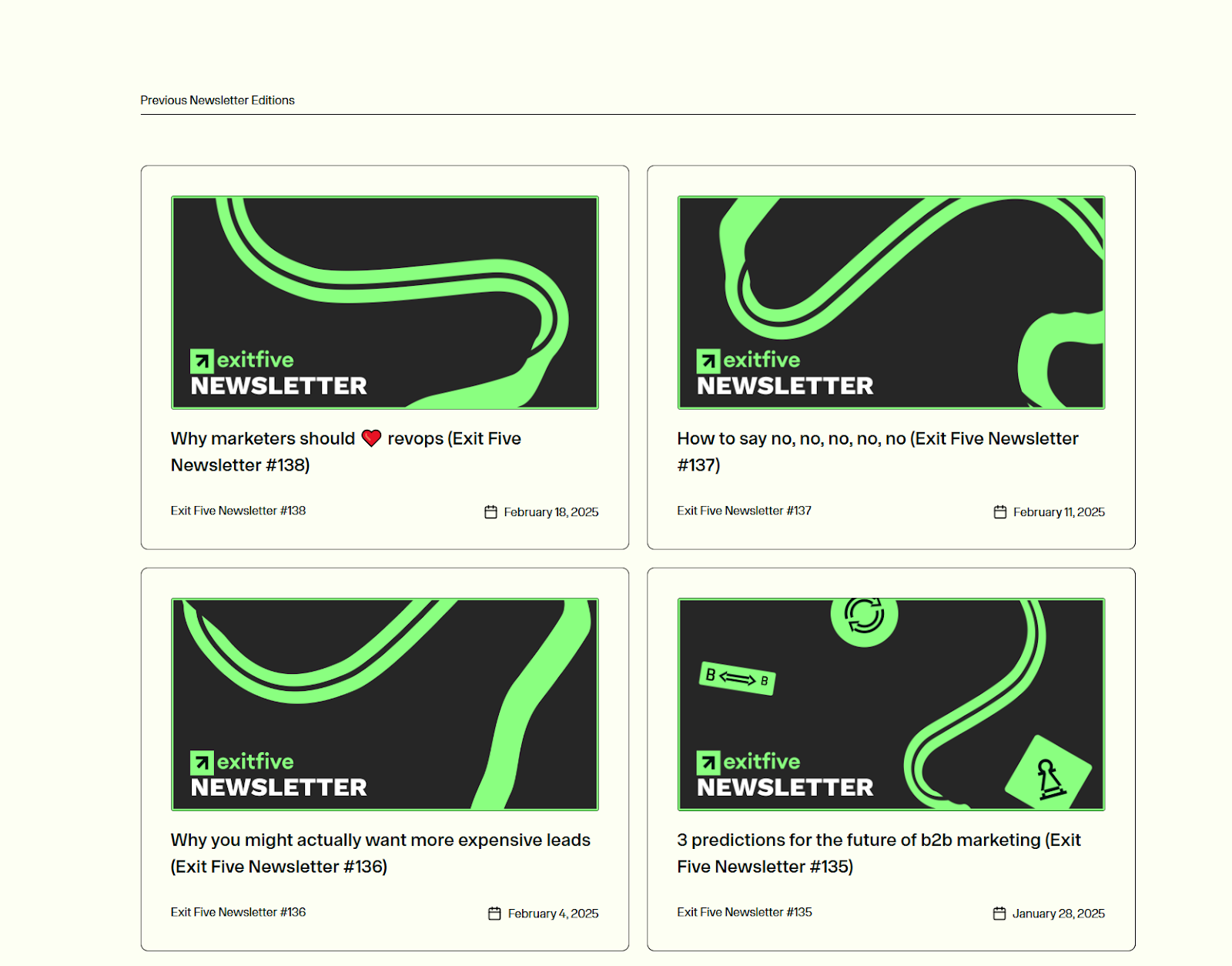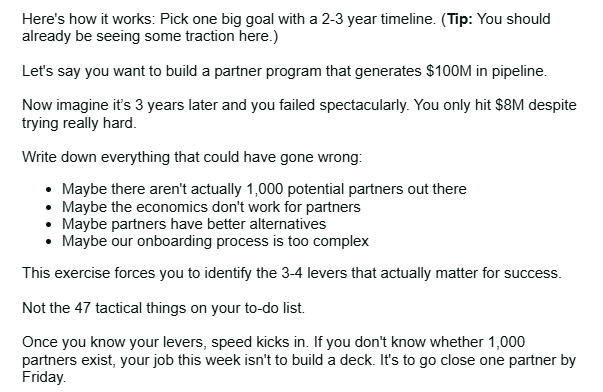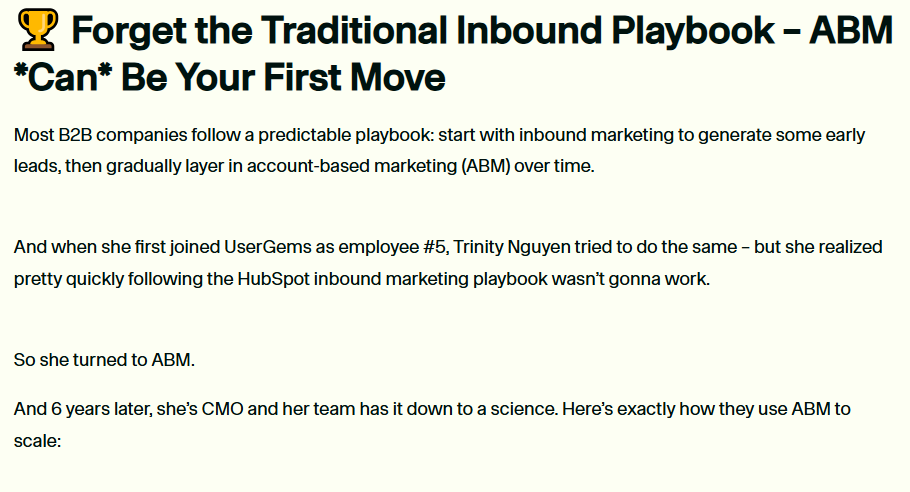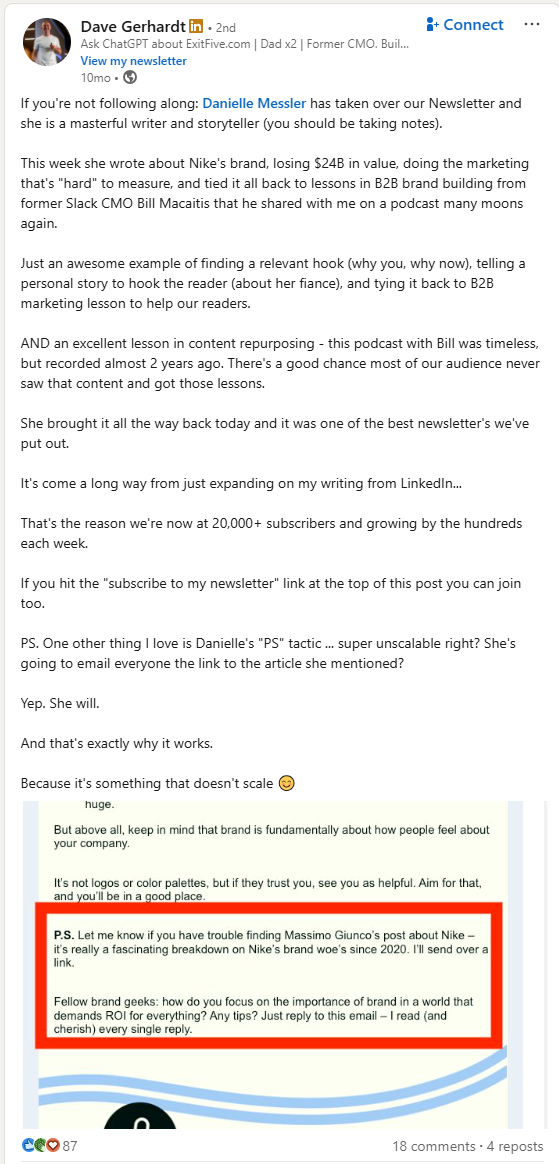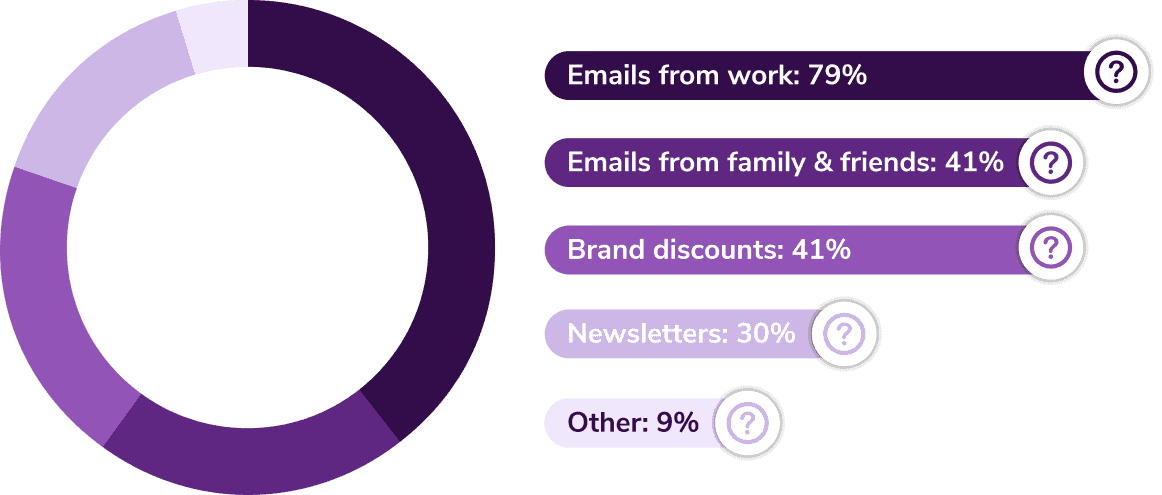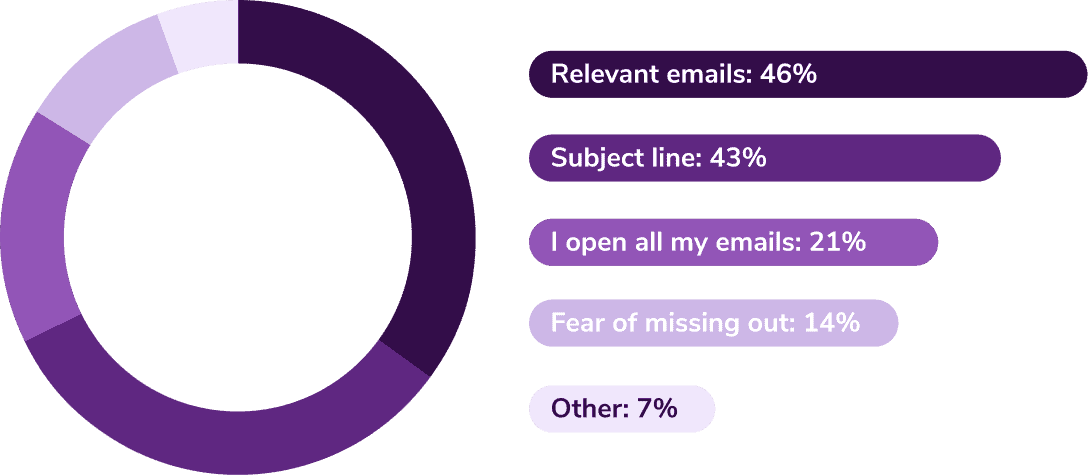It’s about helping users achieve their goals and creating trust-building customer experiences.
In this article, you’ll see why you should feature your product in your content. You’ll learn the step-by-step processes to create product-led content in a tactful way that not only generates users, but activates and retains them.
What makes product-led content so valuable?
Product-led content embeds your tools and solutions within the context of your blog posts, webinars, value-driven guides, podcasts, and more. It educates your audience by showing how they can solve their problems (both with and without your product).
For example, product experience platform Appcues created a blog post on in-app messaging:
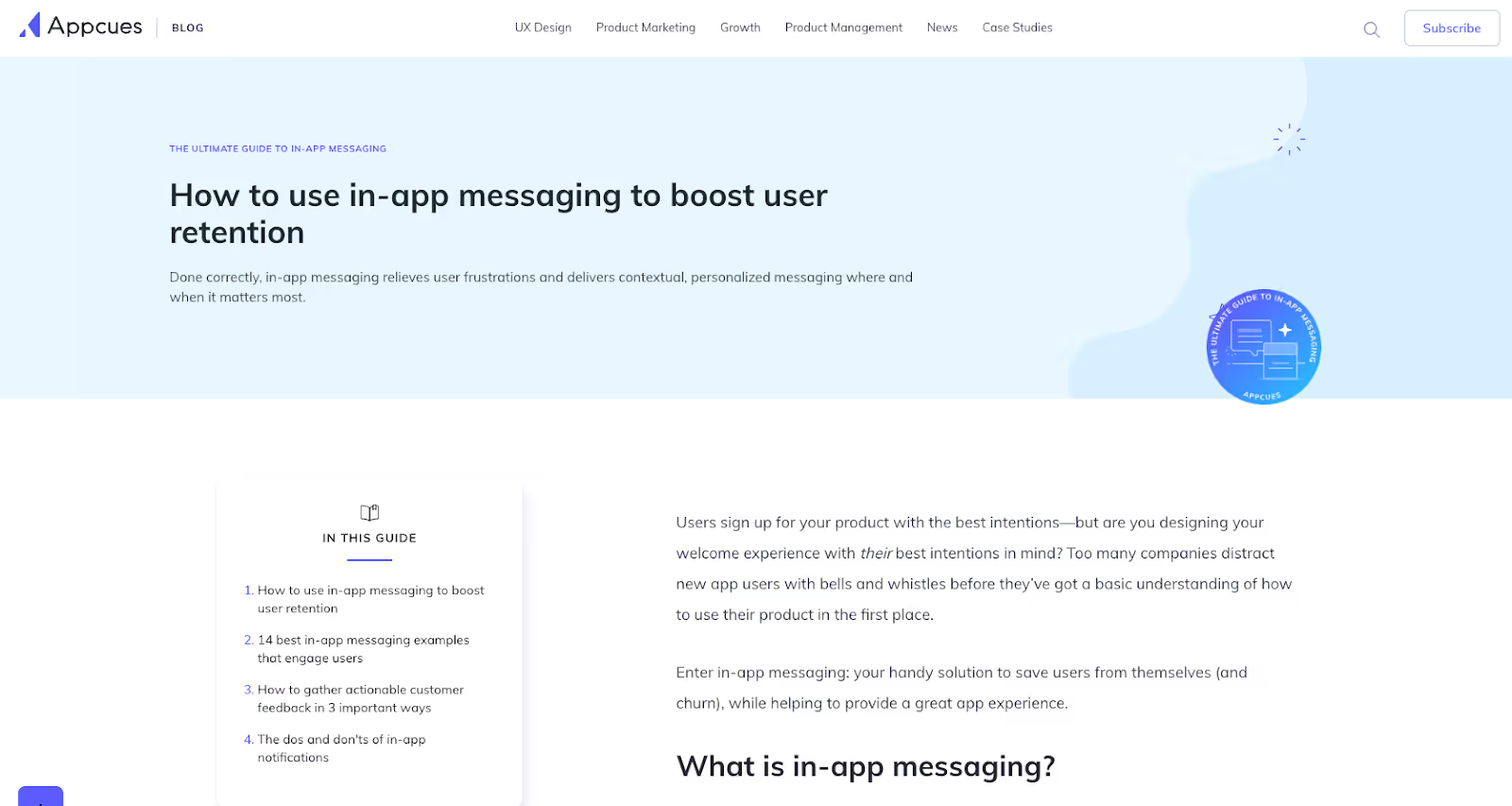
Within the first section of the article, Appcues teaches readers about the importance of tooltips during the onboarding process.
Not only that, it shows them what good tooltips look like:
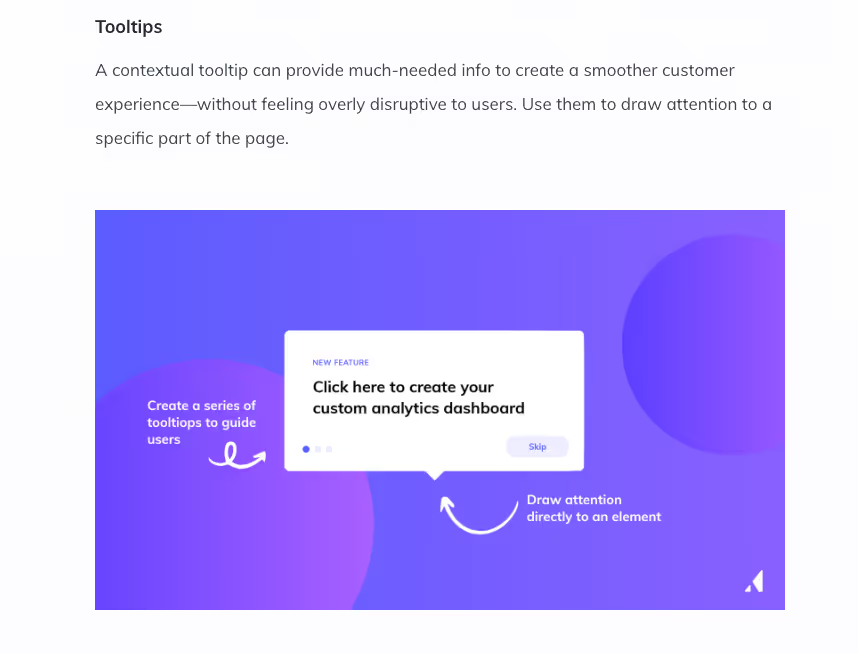
And how users can create them seamlessly using Appcues:
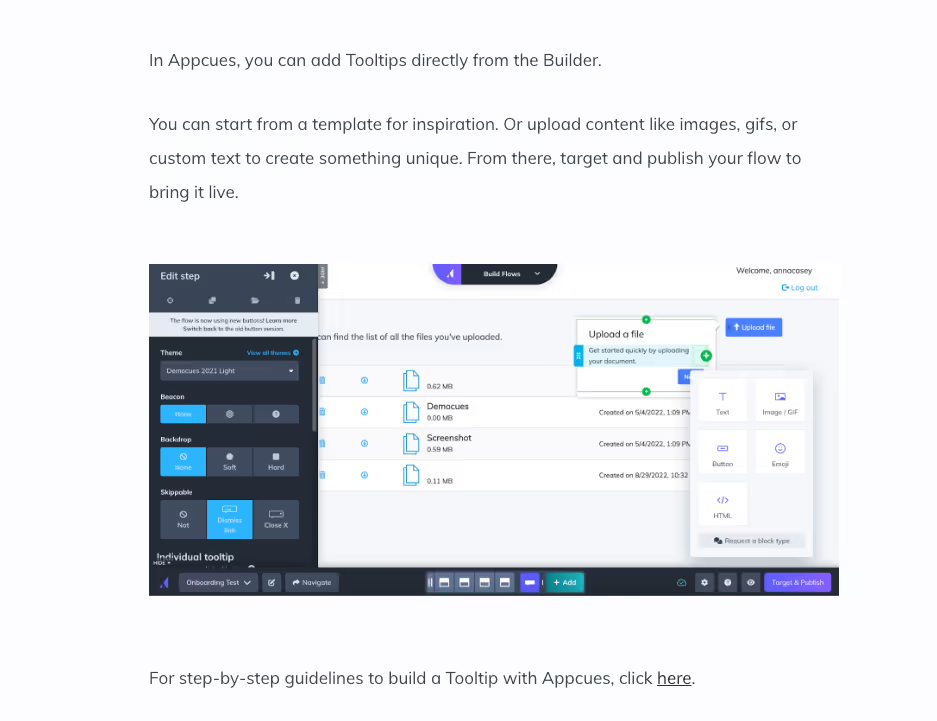
Done well, product-led content builds trust and authority—enough to help B2B companies increase sign-ups, trial-to-paid conversions, demos, and lead generation.
Here’s how:
Put your users and customers first
Great product-led content is inherently buyer-centric.
It’s about solving customer problems in precise terms using real tools, techniques, examples, and workflows.
When you help people achieve their goals with practical value over theory, you build trust.
It’s proof you’re out to serve your audience, not just take their money.
This speeds up buying decisions for new users and enhances the customer experience (CX) for existing ones. Sales, loyalty, and advocacy improve as a result.
Demand Gen Report found that 71% of B2B buyers consumed multiple content assets to inform their decision-making process. But half say that content should be more objective and less “salesy.”
In other words, your customers want more helpful content.
For example, SmileBack’s product-led content empowers users to get maximum value from its customer feedback platform.
As a result, it converts plenty of trial users to paid subscribers.
Imagine a customer data platform creates two blog posts for new customers:
- 👎 One provides a vague argument for why consumer data matters for retail brands (without connecting the dots with actual use cases)
- 🤩 The other includes a step-by-step guide and examples of how their company’s product can help retail brands improve marketing segmentation using a “single source of truth”
Its product-led content shows readers how to achieve their goals by mapping out a process.
Seeing the tool’s capabilities in action builds readers’ confidence in your ability to deliver results.
Those “sign up” CTA buttons become much more appealing as a result.
Focus on pain points and jobs-to-be-done (JTBD) to build brand affinity
The same proportion (71%) of B2B buyers who are influenced by content also share it with their buying committees.
But they won’t just share anything.
They need to appear helpful and knowledgeable to peers and colleagues in order to maintain their professional relationships. Users and buyers alike favor practical content over theory-based posts that repeat tired or unsubstantiated ideas.
Semrush is one of marketing’s best at solving readers’ problems with actionable, product-featuring content. And its strategy generates plenty of organic traffic and backlinks.
For example, this article on “SEO Basics for beginners” offers plenty of actionable advice for startups, small business owners, and marketers:
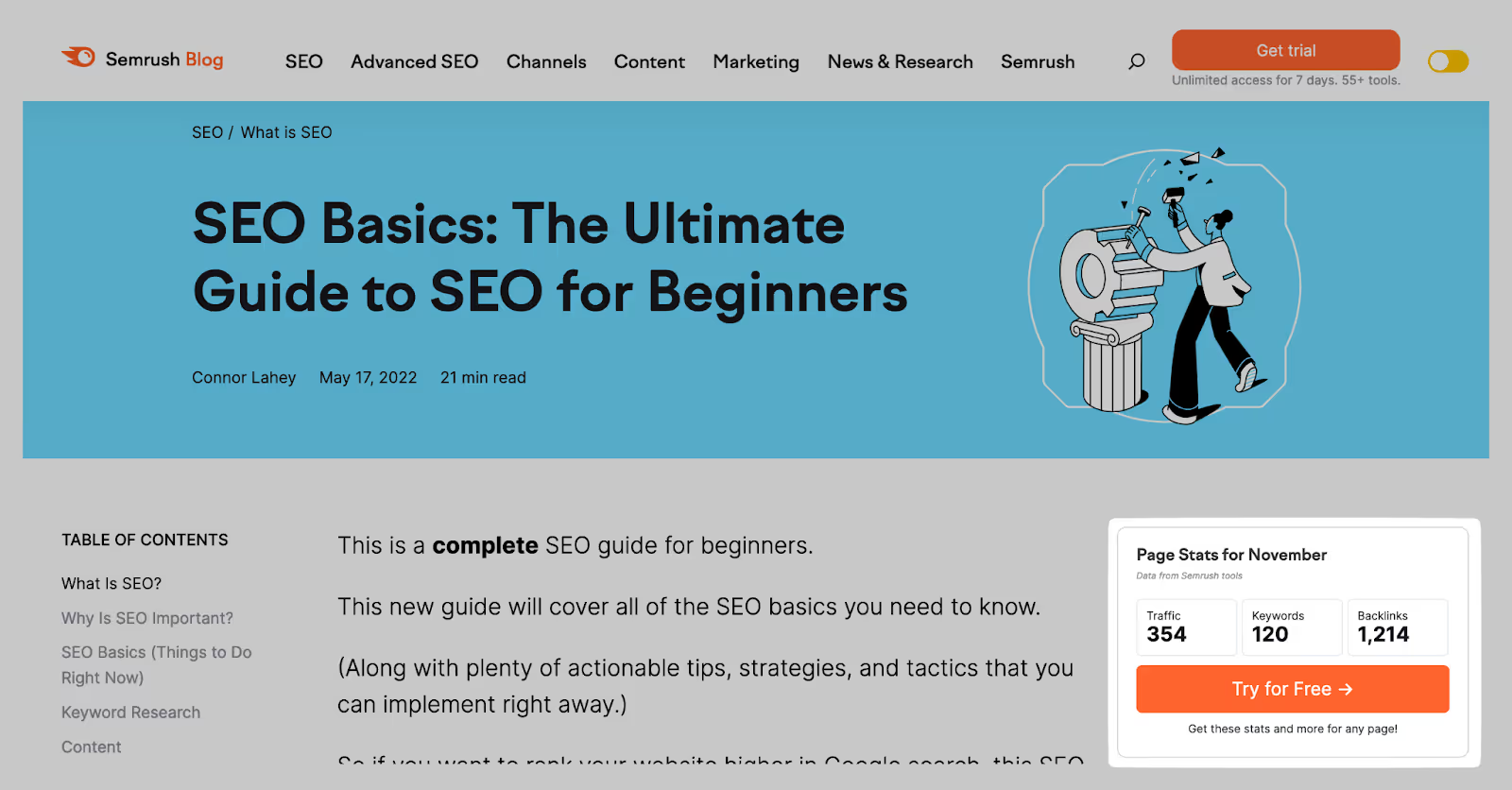
But it also showcases how readers can solve problems and achieve JTBD—something its audience wants to achieve:
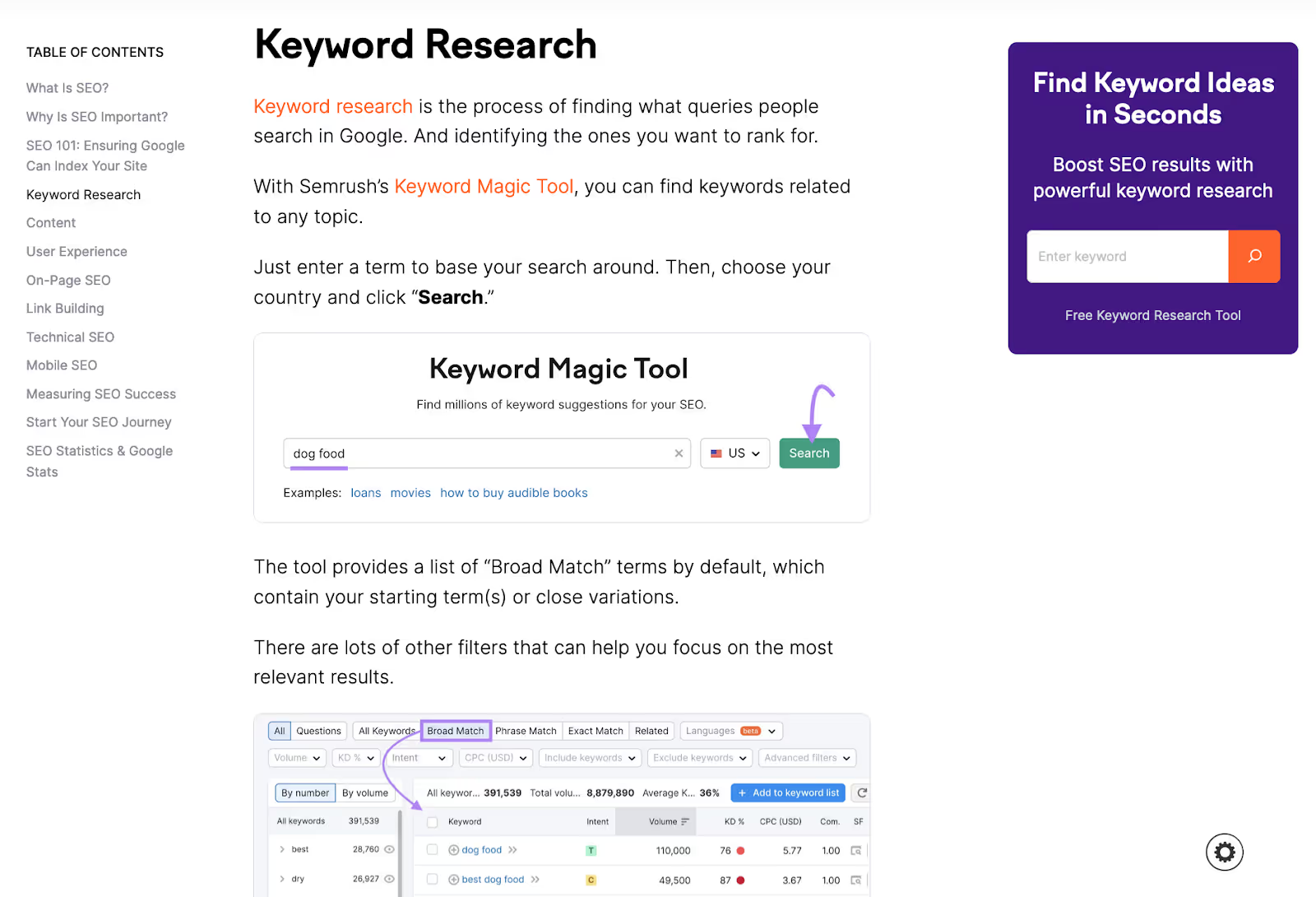
Every new visitor Semrush acquires through its product-led content strategy is another opportunity for someone to discover the brand.
Using your product to illustrate and demonstrate points like this reduces your content’s ‘time-to-value.’
Time-to-value is the rate at which readers get their first revelation, learning, or nugget of value from your content.
And the more immediately useful your content is, the more likely people are to read and share it. Which increases engagement signals and improves SEO performance as a result.
That’s partially why the SCQA content framework (SCQA meaning “situation, complication, question, and answer”) is so effective.
Done right, SCQA positions your brand as an authority or knowledgeable peer.
Imagine a conversation between two colleagues:
🤩 “Hey, you know that problem we have? I found a simple way to solve it—it’s all here in this blog post.”
It’s much more likely than:
🤔 “Hey, you know that problem we have? I’m closer to solving it after reading the theories in this blog post.”
“Sharing” doesn’t just mean one-to-one recommendations.
Other creators are hungry for high-value content to share with their audiences to be genuinely helpful or to reinforce their ideas. This is how you generate backlinks organically.
Deliver more delightful customer experiences
Product-led content fills key knowledge gaps at every stage of the user journey.
This is the process customers and buyers (including trial users) go through as they get value from your product.
And people satisfied by great experiences spend more, for longer.
Qualtrics found that customers who rated a brand experience five stars are more than twice as likely to purchase from the company than those who rated it one or two stars.
Product marketing contributes to higher activation, reduced time-to-value, and an increase in free-to-paid users by:
- Showing leads and freemium users what to expect. This avoids overpromising or causing confusion down the line when users get hands-on with your product. They'll know how to best leverage relevant features from day one.
- Enabling faster, more confident onboarding. First-time users who see product features in action will feel comfortable using them when they sign up. Having context for key features and workflows results in better ROI and faster payback periods.
- Empowering effective ongoing usage. When customers understand product best practices, they'll adopt more of your features over time. This leads to better experiences and outcomes, preventing customers from underutilizing key features—the difference between just scratching your platform’s surface and realizing its full potential.
- Providing helpful support content. Some users will turn to knowledge-base documentation and guides before contacting support. This self-service approach is faster and prevents overburdening your teams with avoidable issues.
Take this article on customer satisfaction surveys from SmileBack:
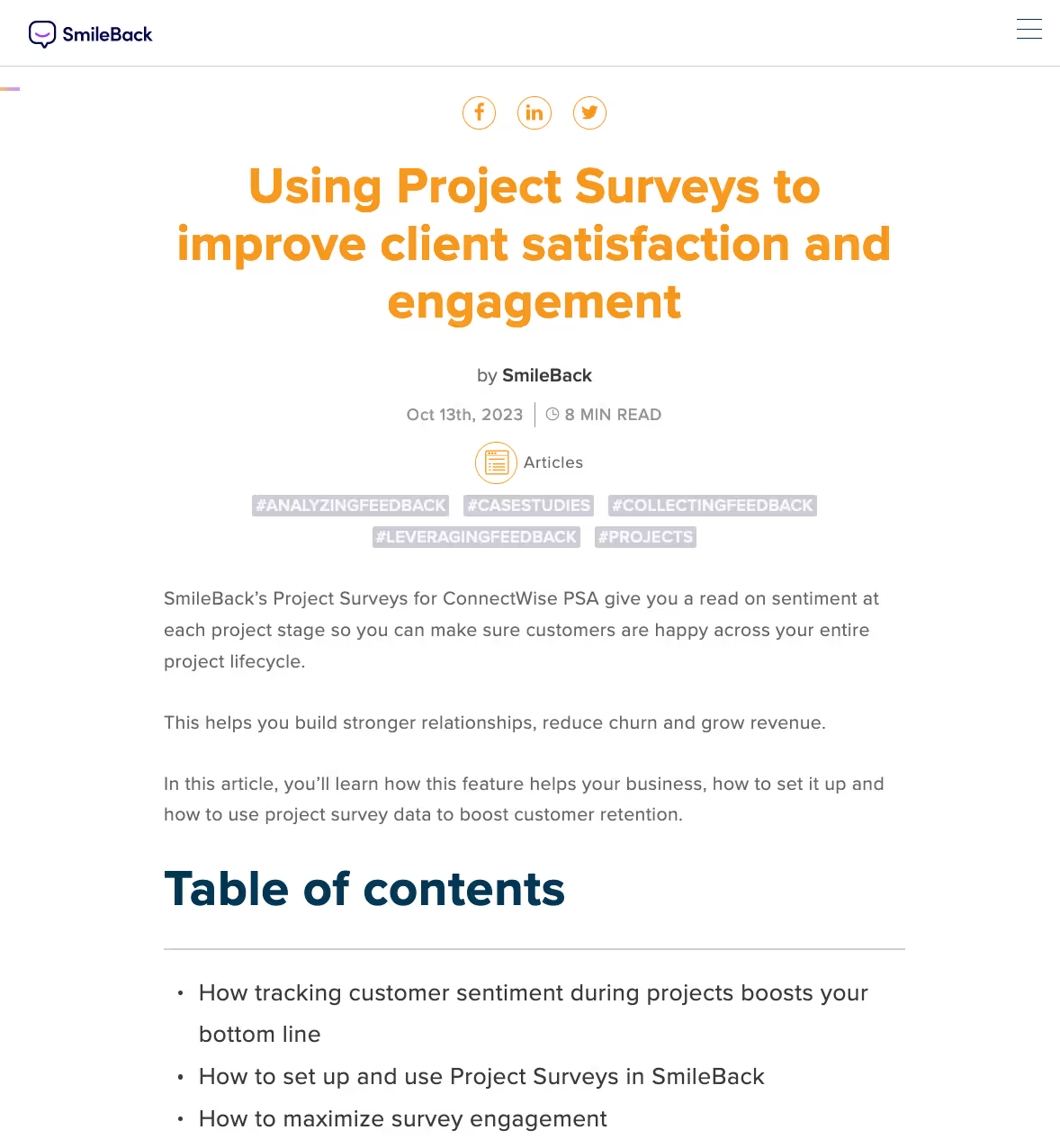
The article covers how managed service providers (MSPs) can grow revenue by measuring customer sentiment at various project stages.
But it goes well beyond theory, showing how readers can progress with SmileBack’s software:
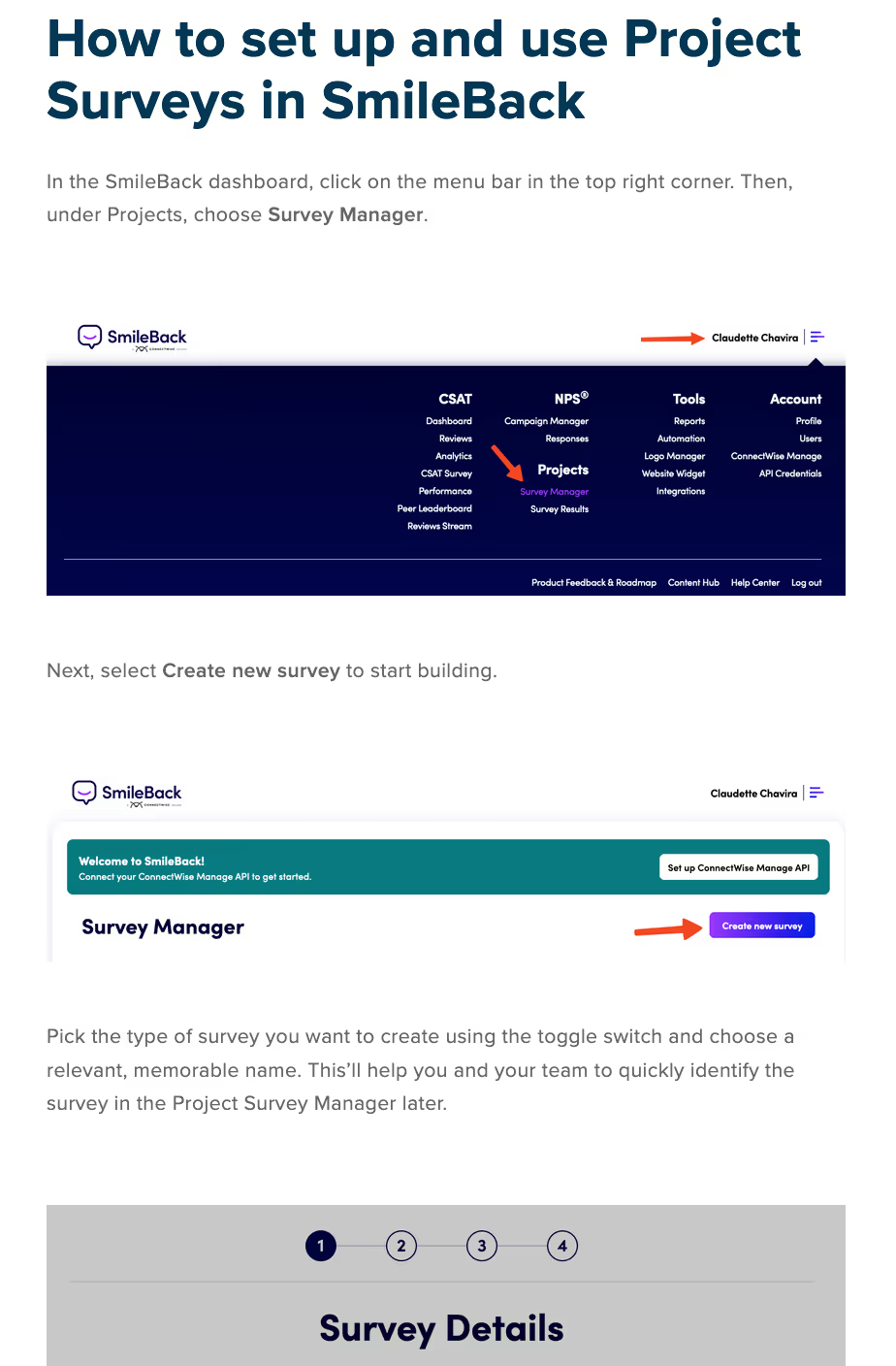
SmileBack isn’t overtly selling its product here. It’s simply helping prospects and users achieve better ROI, making them more likely to sign up for a trial, become a paid user, or renew their subscription.
How to create product-led content that acquires and retains users
Crafting effective product-led content is a balancing act.
Overly promotional copy pushes readers away. But without specific examples and workflows, your blog posts, webinars, and podcasts get lost in the noise.
Here are six principles for crafting product-led content that generates users and improves customer retention.
1. Tie products and features to specific problems
People don’t care about your product unless it can help them overcome a problem or reach their goals.
That’s as true in content marketing as it is more broadly in business.
Which is why great product-led content addresses specific customer pain points and JTBD.
For example, Semrush knows its local business audience uses the Google My Business platform and wants to be more visible online.
It combined those to create a guide on How to Add Keywords to a Google My Business Profile:
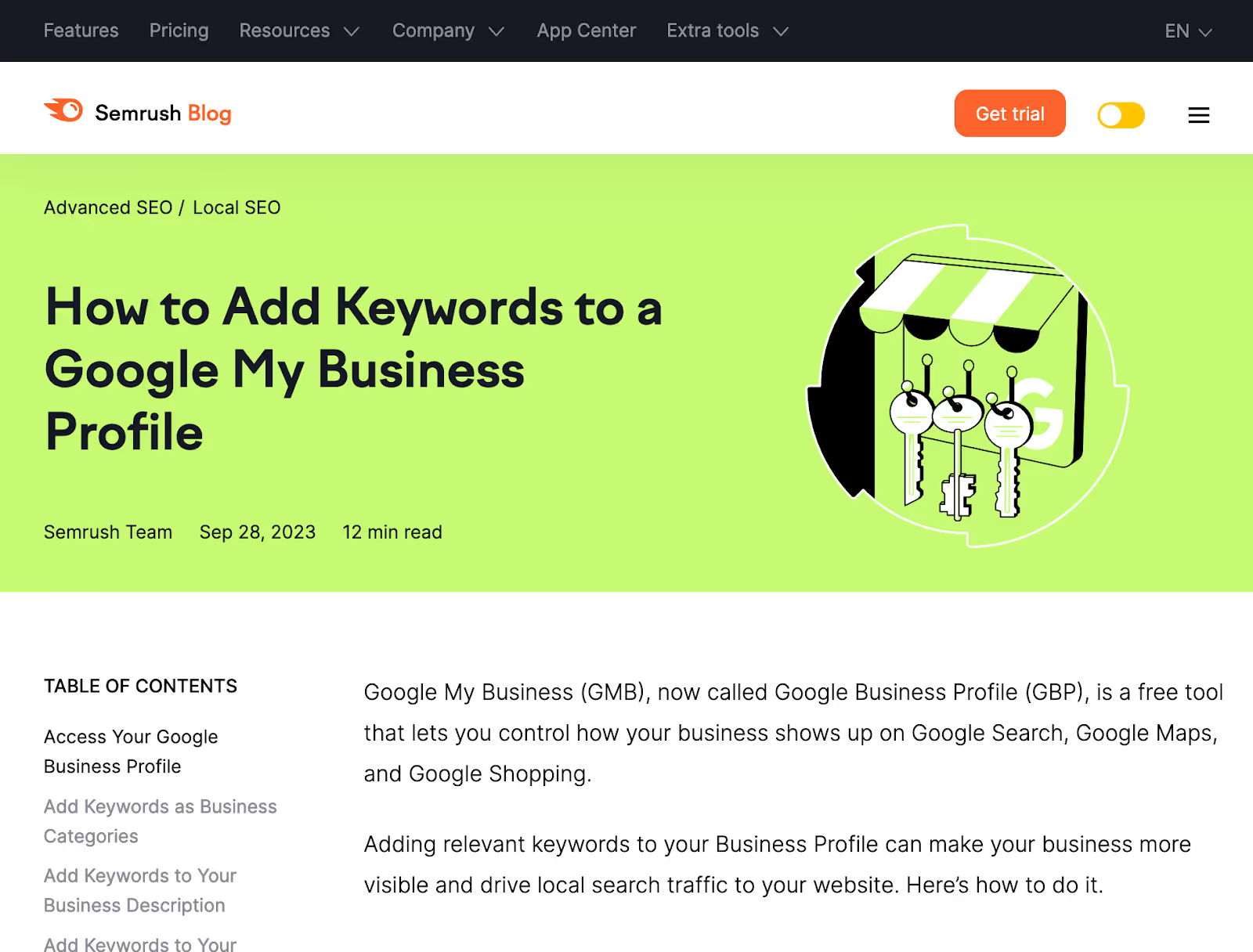
The bulk of this blog post is about Google’s platform. But within the section on finding keywords that drive traffic, it offers step-by-step instructions on how to use its Keyword Magic Tool::
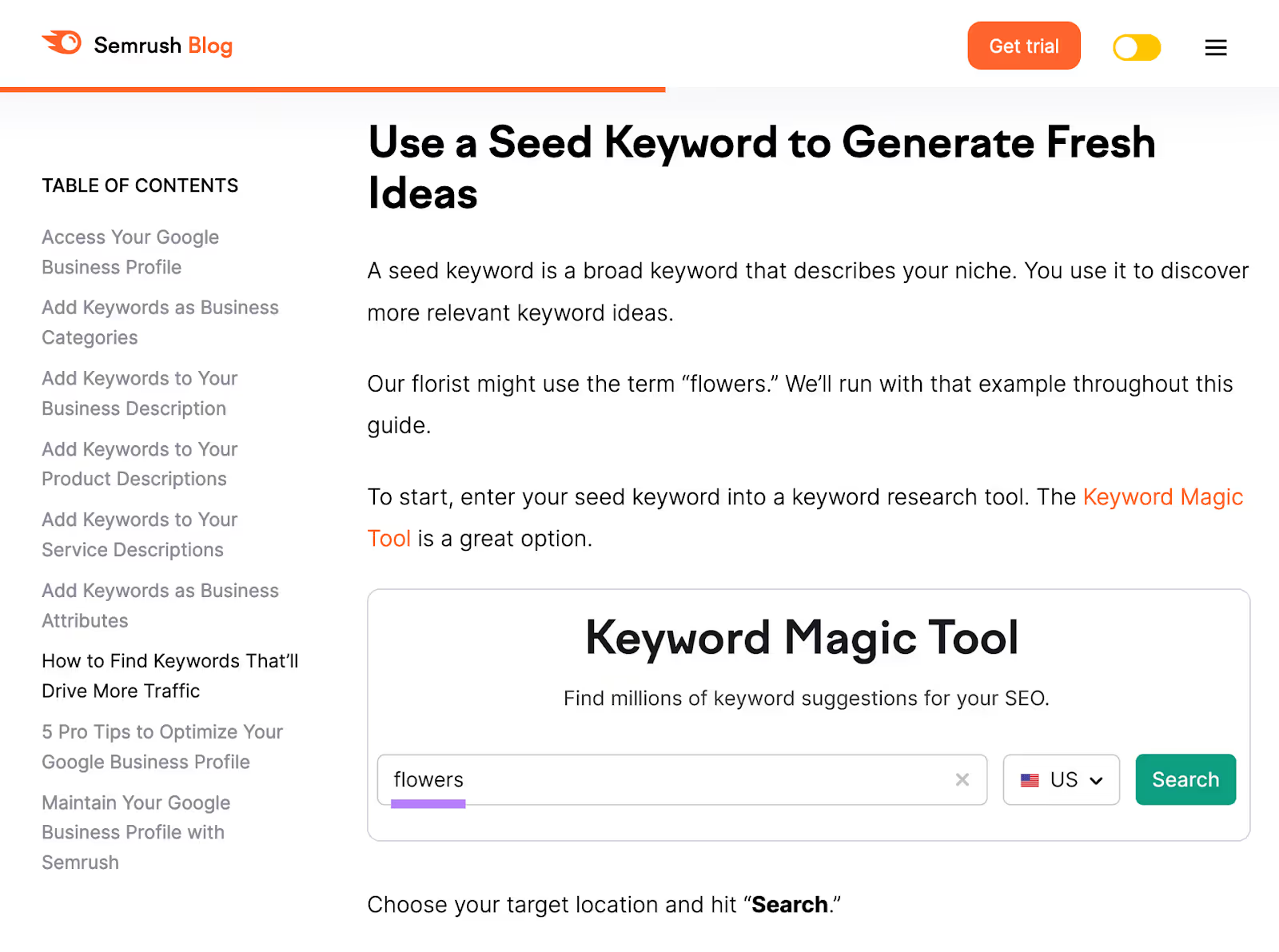
Semrush’s keyword research tool fully warrants its place in the article because it helps readers overcome a particular challenge: identifying keywords that drive local traffic.
Now, you could force products into loosely relevant content. But that’s how many marketers come across too “salesy” and lose readers’ interest.
You must know your target audience in intricate detail to build content ideas around specific needs.
Here are three simple ways to better understand your ICP’s problems:
- Customer interviews. Continually reach out to existing users and prospects to keep your understanding fresh. Ask open-ended questions to uncover challenges, goals, and pain points related to the problem your product solves.
- Support ticket analysis. Monitor trends and common questions in your customer service interactions. These clues indicate knowledge gaps and use cases to cover in your content.
- Product usage metrics. Analyze where customers are getting stuck while onboarding and using your product. Pay attention to in-app guides opened, questions asked, and features ignored. Then create product-led content that addresses those friction points.
Revisit these techniques often to learn how customers’ needs and behaviors change over time.
For example, here’s a support request from Pipedrive where the user asks for help importing data:
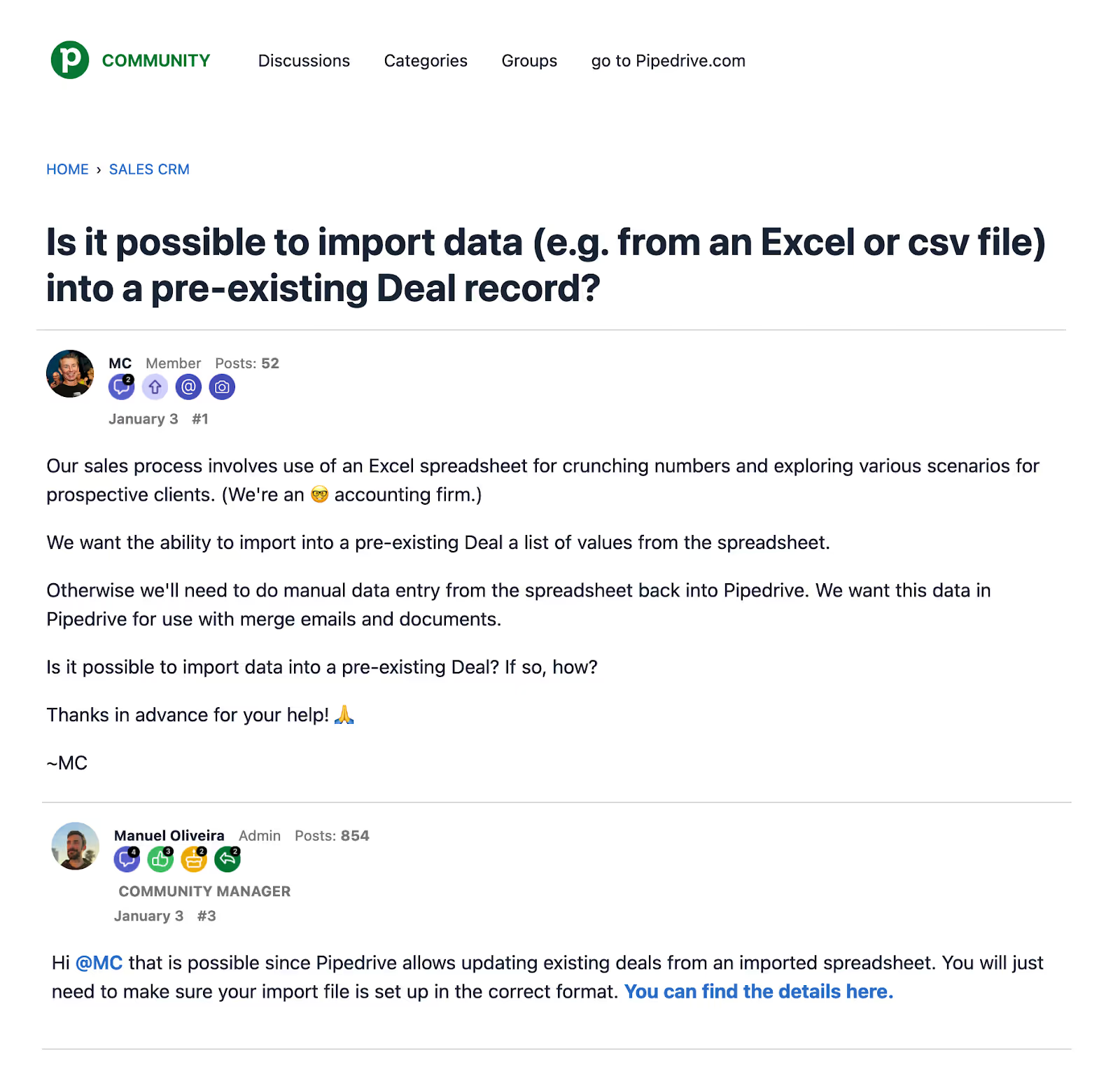
If this query proved common, Pipedrive could bake the answer into a product-led guide on importing data (to complement the knowledge base it links to).
By proactively addressing users’ pain points, Pipedrive helps its audience to help themselves. And ultimately delivers a better user experience.
2. Recruit an internal product champion
Alone, customer insights aren’t enough.
As a marketer, you must become an expert in the product you’re writing about.
This ensures you can:
- Spot the best opportunities to promote relevant features
- Write or talk about your product accurately and authentically
Connect with product managers and owners, developers, implementation specialists, and customer success teams.
These people live and breathe your product’s features and can provide essential context on customer journeys. They may even have case studies and testimonials to offer.
Their insights show how your product works and where users get the most value. And, more importantly, which challenges to address first in your content marketing strategy.
[[component]]
Moreover, it’ll help you become more visible in search engines (according to Google’s guidelines).
Be open about experts’ involvement. It’ll lend credibility to your content.
Just like Ahrefs does in this article on location landing pages:
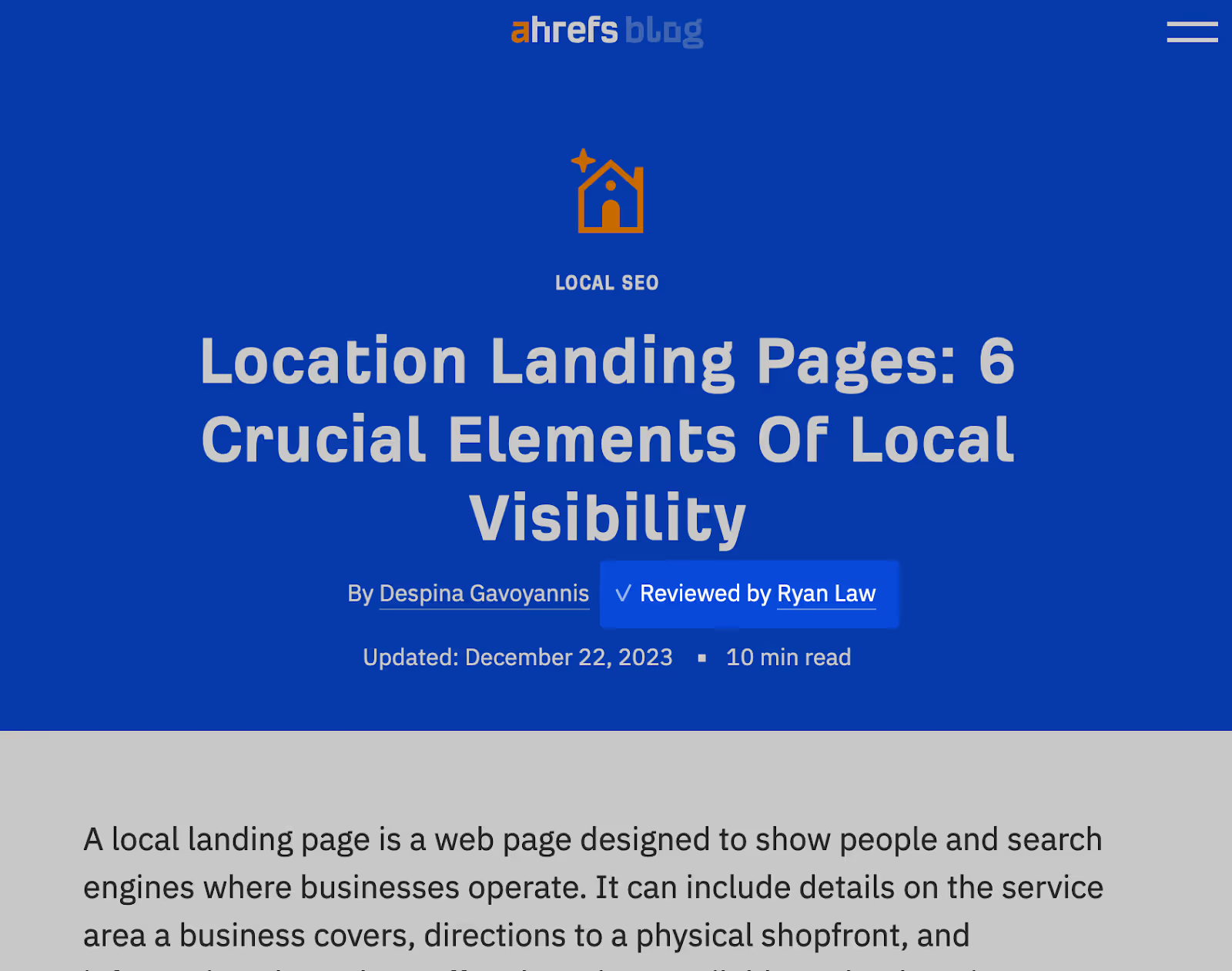
Here, Ryan Law is Ahrefs’ Director of Content Marketing—a bona fide subject matter expert. Advertising his contribution adds authenticity to an already strong blog post.
Connect with your chosen product champion through structured meetings and less formal communication.
Join product meetings to keep up with developments, soak up first-hand product knowledge, and ask questions to hone your understanding.
The best insights won’t always be forthcoming. Tease out expert knowledge with questions like:
- What feedback have you received from customers, and how have we adapted our product based on that feedback?
- Are there common misconceptions about our solution that we should address in our content?
- Which features do you feel are underused or underappreciated, and how can we help users get more value from them?
Then pick a convenient communication channel, be it email, Slack, or similar, to use ad-hoc throughout the content creation process.
Invite product experts to contribute to briefs, outlines, and drafts to ensure product mentions are warranted and accurate in every piece of content.
3. Make your product the centerpiece of your SEO strategy
SEO is one of the most effective ways to get your product in front of your audience and impact revenue.
Many B2B buying journeys begin on search engines. As long as your content ranks for relevant queries on Google, you’ll generate high-converting traffic.
The crux of SEO content is targeting topics people search for, but not all keywords will lend themselves well to celebrating your product.
Question-based queries offer an easy way in as they typically indicate a desire to learn. Think terms with modifiers like “why,” “what,” and “how.” Most tie to a JTBD.
When you find topics and keyword clusters related to customer pain points, offer a DIY approach alongside your solution.
For example, ClickUp’s piece on bespoke calendars gives searchers who want to learn “how to make a calendar in Excel” a clear step-by-step solution:
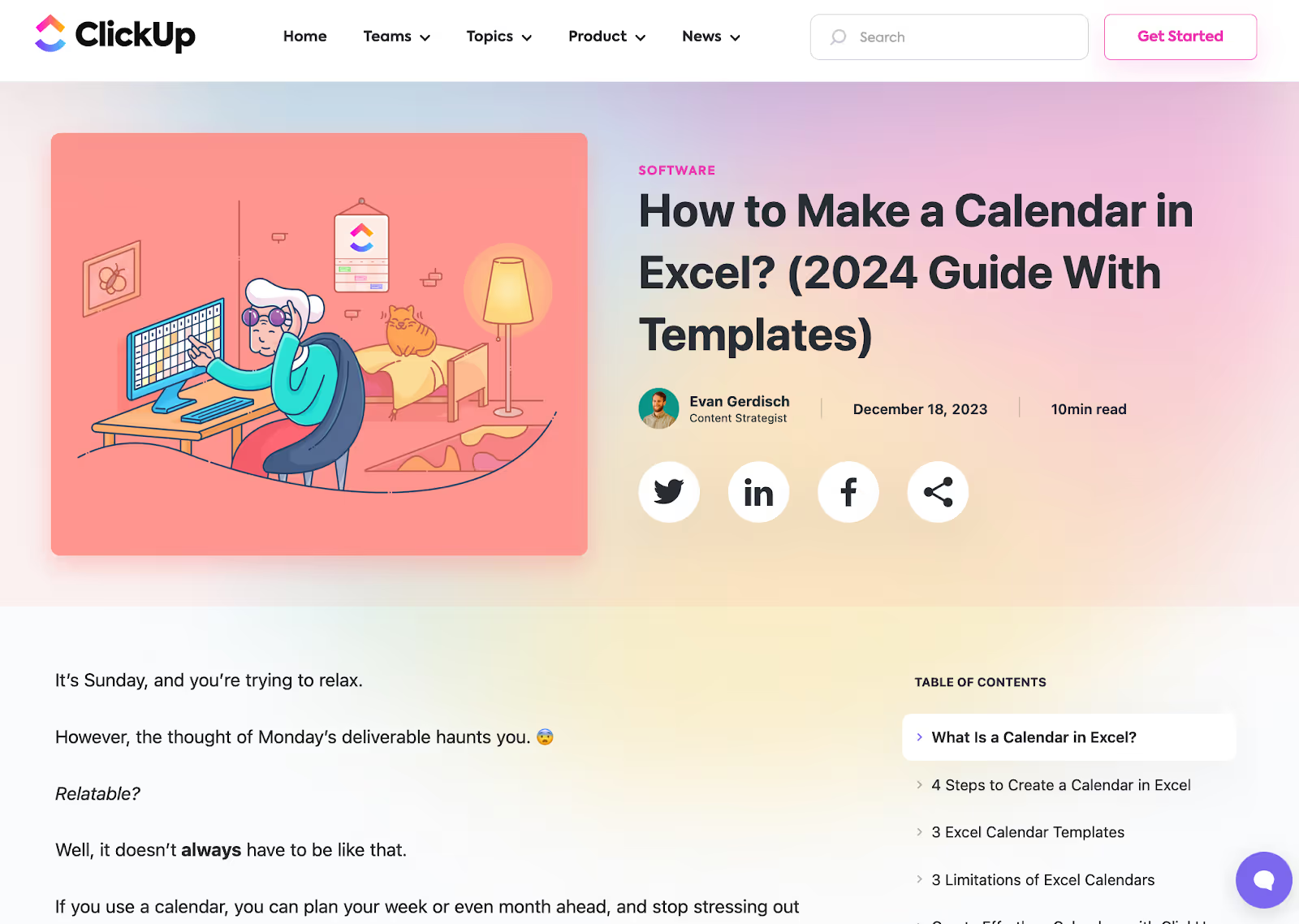
Later, it highlights Excel’s shortcomings before offering its own product as an “effortless” alternative:
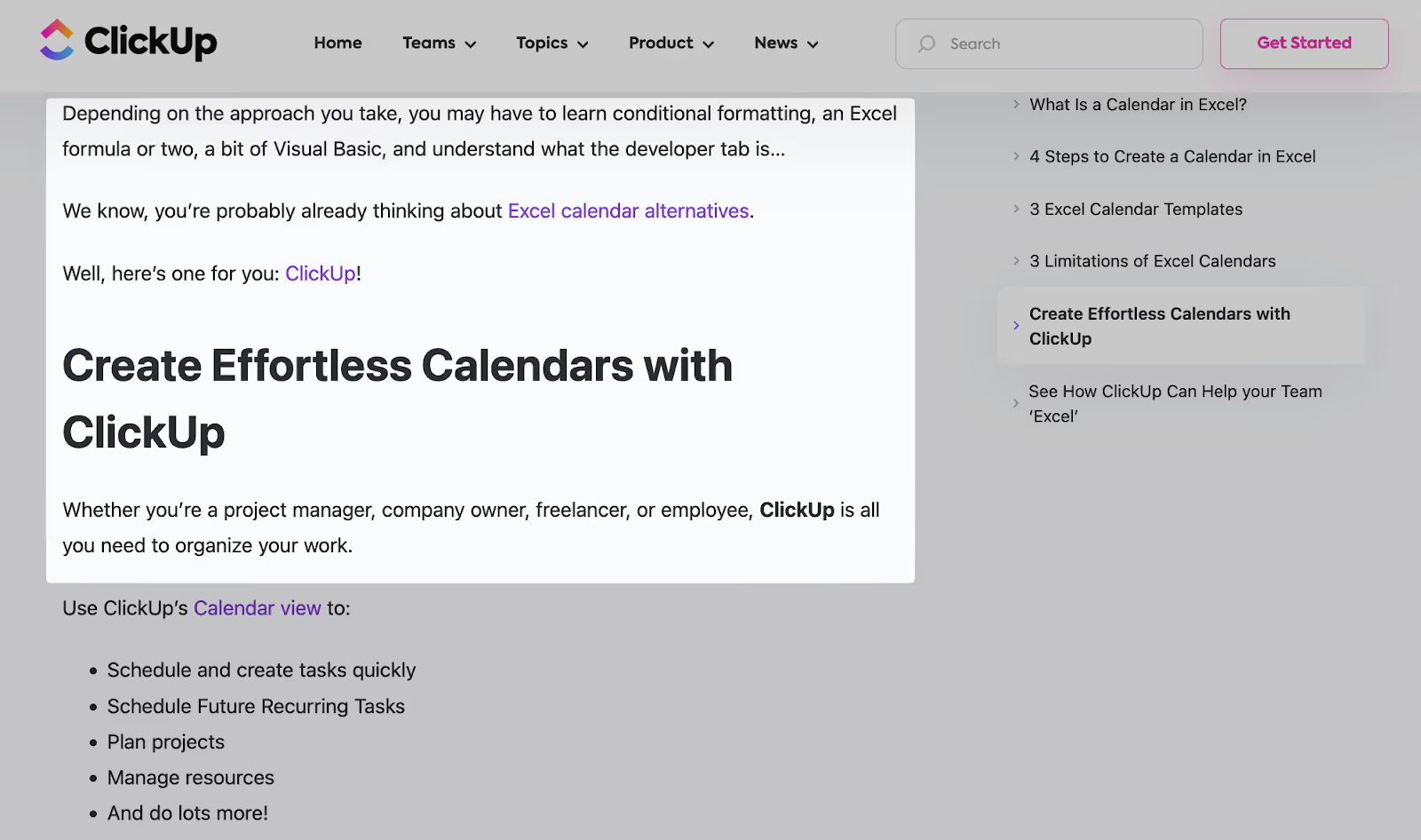
Ultimately, searchers get a clear answer to their original query and Clickup promotes its product in a natural way.
It benefits the brand, reader, and search algorithms.
Pitching a DIY method as the “hard” option to your solution’s “easy” will make your content more accessible and valuable to a broader audience. And therefore more appealing to Google.
4. Put value before your product
The “led” aspect of product-led content is—ironically—misleading.
Meeting your audience’s needs and delivering disproportionate amounts of value must always come first.
For example, the value of ClickUp’s “how-to” guide for building calendars is in solving a common problem: organizing projects, events, and tasks in a cost-efficient way.
ClickUp’s product plugs a gap in that journey but it isn’t the primary focus.
A product may be more prominent if it’s critical to solving a highly specific problem. Like in this SmileBack blog post, which focuses on the software’s Microsoft Teams integration:
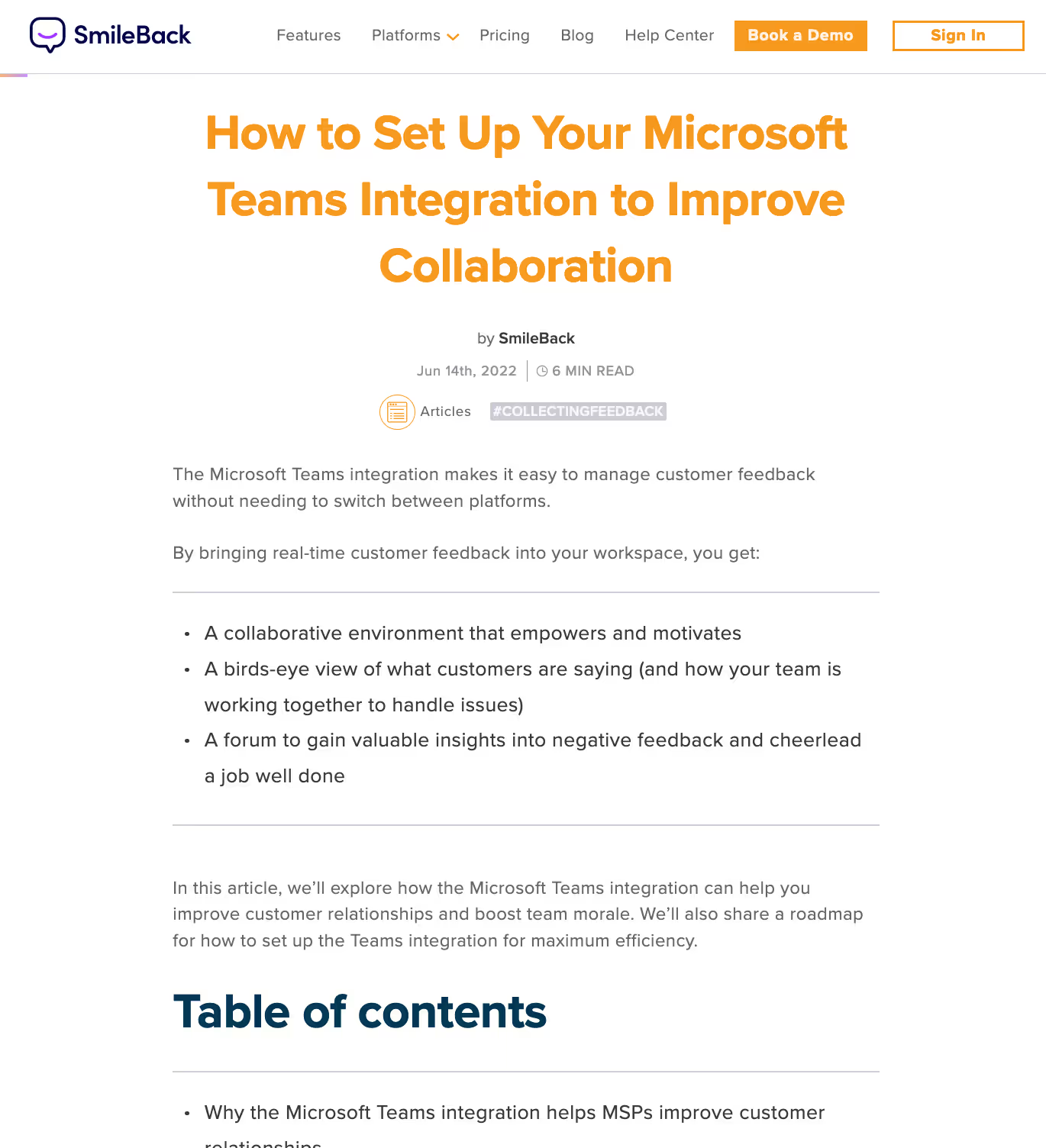
It’s much more specific than “how to collect customer feedback,” and its audience is narrower, but the content is still value-first. It exists to help SmileBack subscribers who use Microsoft Teams improve collaboration by joining the tools together.
When planning content ideas or looking for ways to weave products into existing content, consider where each piece would fall on the following scale:
Most of the best examples of product-led content fall into these categories. As for where, it depends on the context.
For instance, ClickUp’s templates aren’t essential for building a business calendar but are highly relevant and helpful.
This would fit within the second category as it’s top-of-funnel content that solves a common problem.
However, SmileBack’s Microsoft Teams integration is the only way to connect SmileBack with Microsoft Teams. It’s critical to solving that highly specific problem for existing or prospective users, so it’s bottom of funnel (BOFU) content in category three.
5. Convert in-market audiences with bottom of funnel (BOFU) content
Product-led content isn’t just for problem-solving and JTBD.
It can also convert high-intent search traffic.
These are in-market buyers researching products and categories capable of solving their day-to-day challenges.
It means the best BOFU product-led content, in all its forms, is search-friendly.
There are many BOFU content formats capable of building awareness and generating sign-ups. Including:
- Product and feature landing pages detailing key benefits and value propositions
- Comparison pages, ideal for buyers pondering two (or more) specific solutions
- Listicles that let searchers compare top-performing products, features and other solutions efficiently
For example, Pipedrive has a landing page comparing its features with a direct competitor, HubSpot.
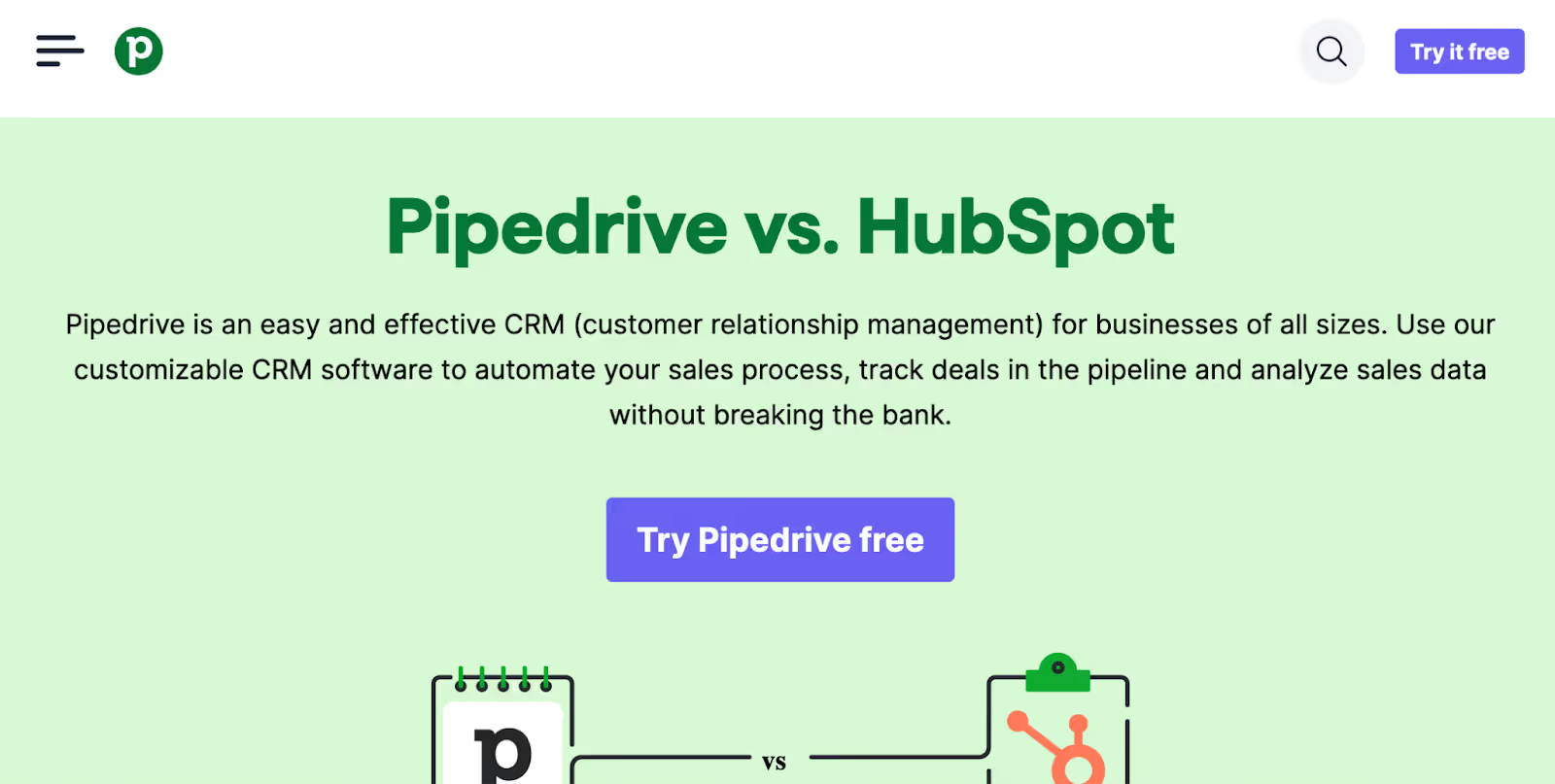
This landing page, which prominently features an “at a glance” comparison table, ranks top in the SERPs for “Pipedrive vs. HubSpot”.
It’s a term that in-market buyers who still have both tools in mind will undoubtedly search to help with their research process.
HubSpot knows this helps conversions. Hence its entry at #2:
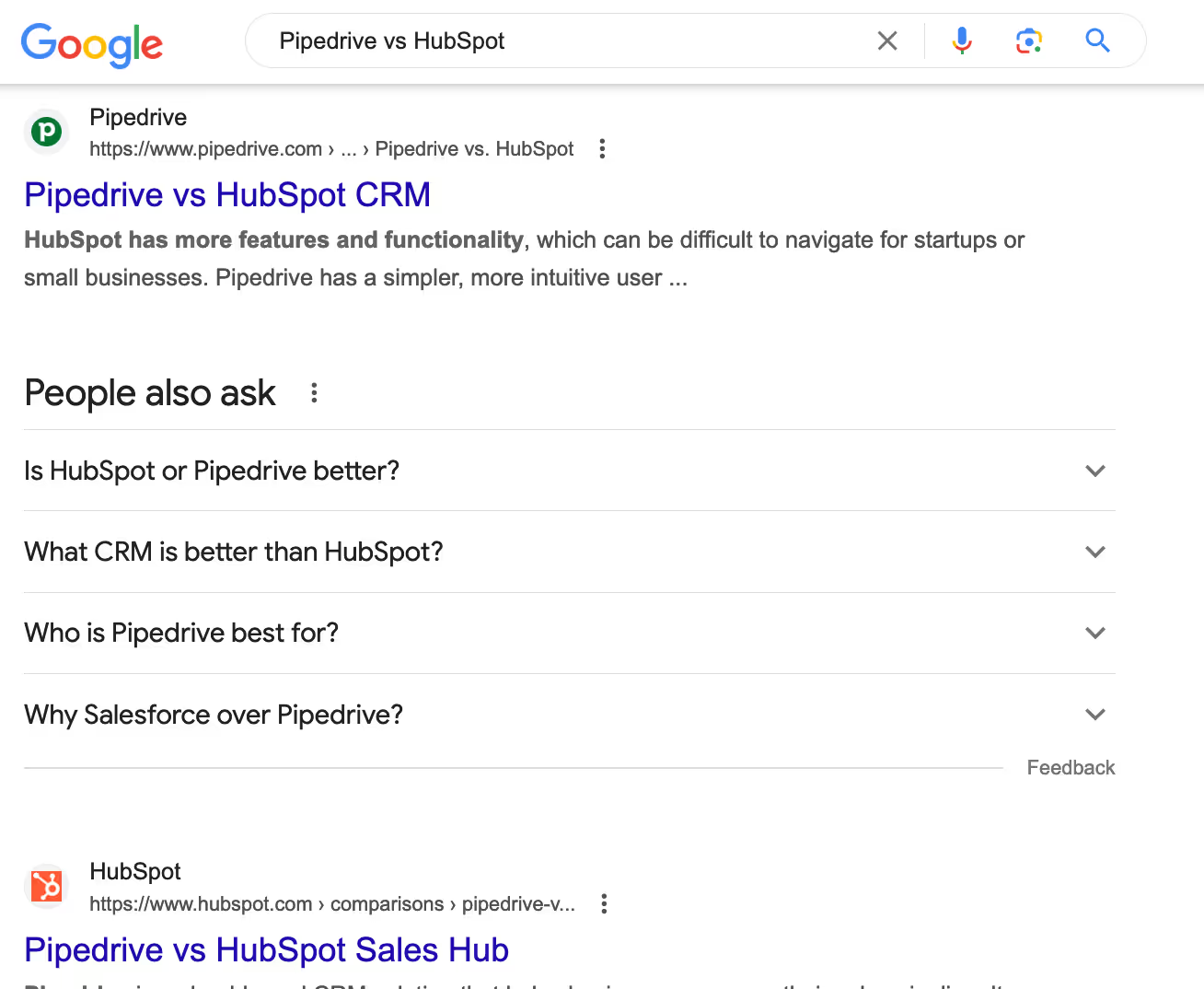
Google’s “People also ask” section gives more clues into your audience’s mindset:
- “Is HubSpot or Pipedrive better?” = They’ve narrowed their search to two tools but can’t decide which to go for.
- “What CRM is better than HubSpot” = They’re sold on CRM software but not on HubSpot.
- “Who is Pipedrive best for?” = They’re almost sold on Pipedrive but need reassurance that it’s for them.
- “Why Salesforce over Pipedrive?” = Again, they’ve narrowed their search to two tools.
One thing’s clear across all these queries: these users are close to conversion.
So, when you cater to them with product-led content targeting keywords that indicate commercial (buying) intent, you’re highly likely to boost acquisition.
Just as Pipedrive did with our support. As well as boosting organic traffic in English markets by 50%, the company hit a post-pandemic sign-up record in the final quarter of 2022.
How do you create BOFU product-led content?
It’s a balancing act. Sure, you need to promote your solution. But users who make it this far will always see through outlandish claims and biased pitches.
The trick to grabbing and keeping savvy readers’ attention is to be honest, accurate, and precise.
From our experience helping SaaS brands grow conversions, the best results happen when you:
- Are impartial. Don’t be afraid to lay out the facts, even if they’re not in your favor—76% of buyers trust brands that make honest claims about their products.
- Get the details right. Involve product champions in content creation and take time researching competitors’ solutions. It ensures all product mentions and comparisons are accurate to avoid cease-and-desist notices (they do happen).
- Serve your readers. Call out who each tool and feature is right for. Recommend competitors that better fit your readers’ needs. Selling to bad-fit customers can hit your churn rate and reputation.
Remember, BOFU content won’t always be the best fit for every topic or stage in the buyer journey.
When keyword and competitor research highlights a different search intent (e.g., more demand for “how-to” info), tailor your content accordingly.
6. Find a great screenshotting tool (you’ll need it)
Screenshots are pivotal in showcasing B2B SaaS companies’ product features and functionalities.
They give potential customers tangible previews and show existing users exactly where to look in a tool’s interface as they follow along.
For example, in Trello’s blog post on strategic planning, the writer illustrates their points on visualizing data with a real shot of the Trello Dashboard view:
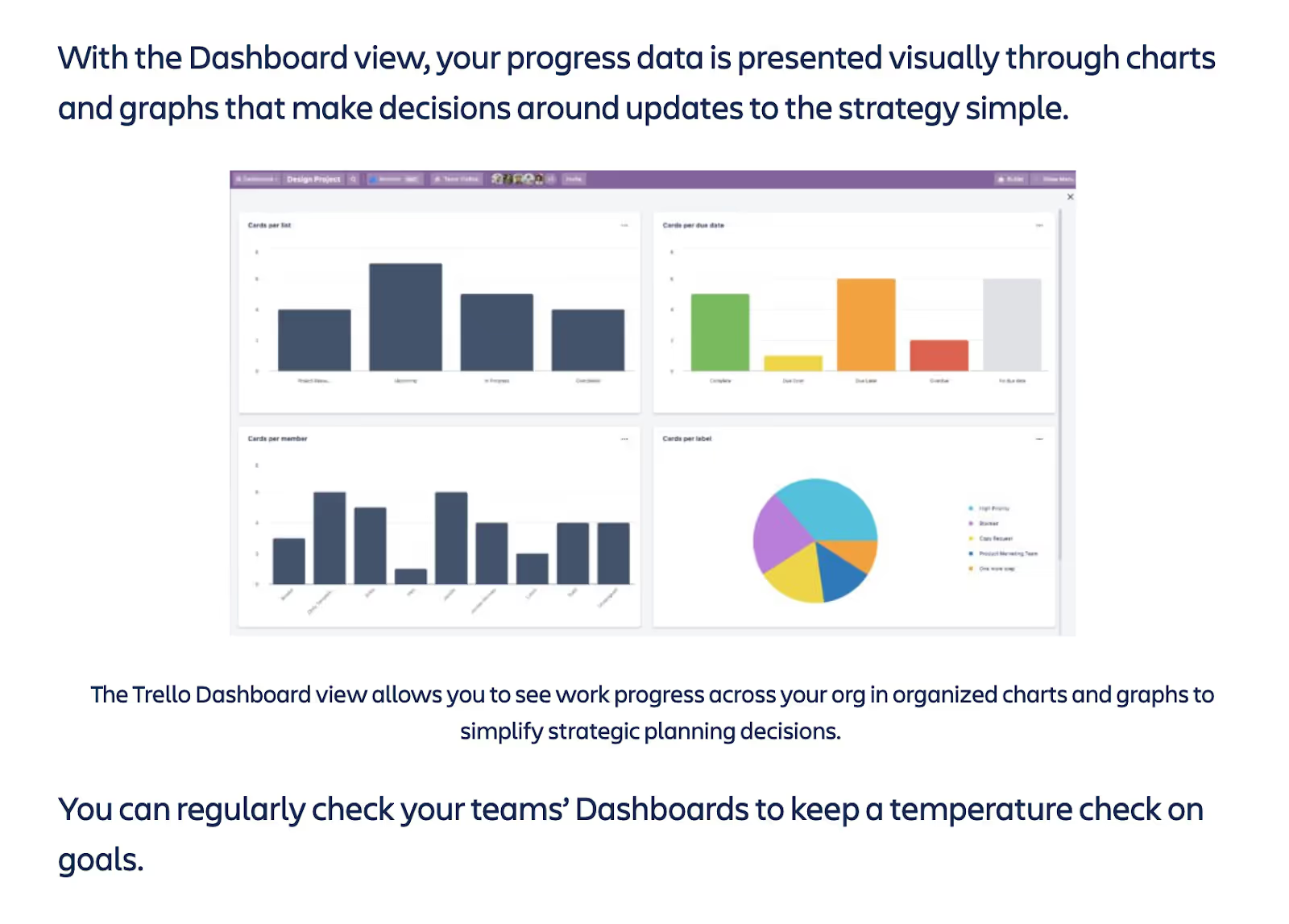
Prospects in the consideration stage now know what to expect from Trello’s product.
It shows users what they can get by signing up for a free trial or paid subscription. So they’re more likely to convert.
Video clips and GIFs from your product allow even deeper engagement.
Content Marketing Institute found video content (including longer formats) to be the seventh-most valuable content asset among B2B marketing teams.
Short clips will catch skimmers’ attention and help readers understand how your solution works.
Not sure where to start? Here are a couple of our favorite screenshotting apps (outside of the native MacOS and Windows tools, which have limited functionality) to try:
- Shottr (Mac). A super-fast app that can record still and scrolling screenshots. All of Shottr’s advertised features, including annotations, cloud uploads, and text recognition, are free to use. Upgrade for early access to new features. Download it here.
- Snagit (Windows and Mac). A more comprehensive app for recording still, scrolling, and video screenshots, as well as audio. A versatile share function makes inserting screenshots into documents, chats, social posts, and cloud storage easy. Snagit is free to try and $62.99 (or £60.92) for a lifelong license. Download it here.
As for creating GIFs from videos, Adobe Express is a reliable free converter you can use in your web browser (after signing up). You can clip sections of your videos and choose sizes and ratios based on where you’ll upload your file.
A product-led approach to customer acquisition and retention
There are good and bad ways to do product-led content marketing.
The bad involves hard-selling solutions under the guise of “helping” potential and existing customers. And it’s counterproductive. It’ll turn customers away before they’ve had a chance to learn about or love your brand.
The good is all about tactfully highlighting your product as the best solution to your ICP’s biggest problems.
Done right, it’ll build trust and authority for your brand and ultimately improve acquisition, retention, and revenue.
Enlisting these people gives your content expertise, experience, authoritativeness, and trustworthiness (E-E-A-T). That’ll help you cut through the noise to build topical authority.



